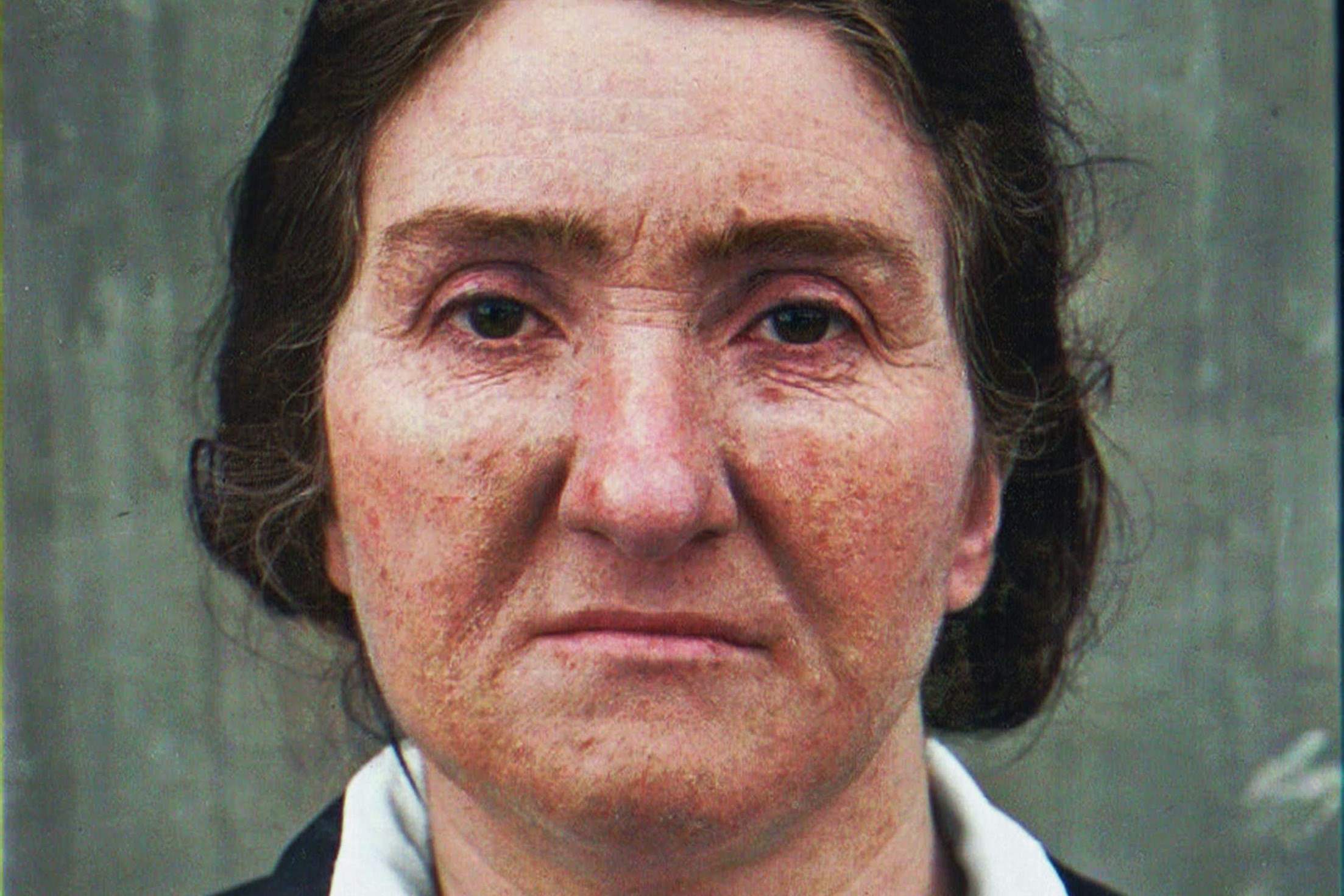
Leonarda Cianciulli might not be a household name, but her story is as chilling as any horror novel. Born in Italy in 1894, she became infamous as the "Soap-Maker of Correggio." Her life took a dark turn during World War II when she committed a series of gruesome murders. Cianciulli believed that human sacrifices would protect her son, who was fighting in the war. She lured three women to her home, killed them, and used their bodies to make soap and teacakes. Her crimes shocked Italy and led to her arrest in 1940. Leonarda Cianciulli's tale is a macabre mix of superstition, desperation, and cold-blooded murder. Here are 35 facts that delve into the life and crimes of this notorious figure.
Key Takeaways:
- Leonarda Cianciulli, the "Soap-Maker of Correggio," was an Italian serial killer driven by superstition and mental illness, leaving a chilling legacy that continues to captivate and horrify true crime enthusiasts.
- Leonarda's bizarre and gruesome crimes, including using human remains in soap and tea cakes, reflect the dark potential within the human psyche and serve as a cautionary tale about the dangers of superstition and mental illness.
Who Was Leonarda Cianciulli?
Leonarda Cianciulli, also known as the "Soap-Maker of Correggio," was an Italian serial killer who gained notoriety for her gruesome crimes during the early 20th century. Her story is filled with bizarre and chilling details that have fascinated true crime enthusiasts for decades.
-
Born on April 18, 1894, in Montella, Italy, Leonarda had a troubled childhood marked by abuse and neglect.
-
She attempted suicide twice during her teenage years, reflecting her early struggles with mental health.
-
In 1917, she married Raffaele Pansardi, a registry office clerk, against her parents' wishes.
-
Leonarda believed her mother cursed her marriage, leading to a series of unfortunate events in her life.
-
The couple moved to Correggio in 1930, where Leonarda opened a small shop and became well-liked in the community.
The Crimes of Leonarda Cianciulli
Leonarda's criminal activities began in the late 1930s and continued into the early 1940s. Her methods and motivations were both shocking and macabre.
-
She murdered three women between 1939 and 1940, luring them to her home with promises of help and friendship.
-
Leonarda's first victim was Faustina Setti, whom she promised to find a husband. She killed Faustina with an axe and disposed of her body in a cauldron.
-
The second victim, Francesca Soavi, was promised a job. Leonarda used the same method to kill and dispose of Francesca.
-
Her third victim, Virginia Cacioppo, was a former soprano singer. Leonarda claimed Virginia's flesh was turned into soap and her blood into tea cakes.
-
Leonarda believed that human sacrifices would protect her son, Giuseppe, who was serving in the Italian army during World War II.
The Arrest and Trial
Leonarda's crimes eventually caught up with her, leading to her arrest and a sensational trial that captivated Italy.
-
Authorities became suspicious when Virginia Cacioppo's sister reported her missing, leading to an investigation.
-
Leonarda was arrested in 1940 after police found evidence linking her to the disappearances.
-
During her trial in 1946, she showed no remorse and even provided detailed accounts of her crimes.
-
Leonarda was found guilty of multiple murders and sentenced to 30 years in prison and three years in a criminal asylum.
-
She died of cerebral apoplexy on October 15, 1970, while still in prison.
The Legacy of Leonarda Cianciulli
Leonarda's story has left a lasting impact on popular culture and true crime literature. Her bizarre and gruesome methods continue to intrigue and horrify people.
-
Her case inspired numerous books, documentaries, and even a play titled "Love and Magic in Mama's Kitchen."
-
Leonarda's cauldron, used to dispose of her victims, is displayed in the Criminological Museum in Rome.
-
Her story is often cited as an example of how superstition and mental illness can lead to horrific crimes.
-
Leonarda's belief in curses and human sacrifice highlights the dark side of folklore and superstition in rural Italy.
-
Despite her heinous acts, some view her as a tragic figure shaped by a lifetime of abuse and hardship.
Psychological Profile
Understanding Leonarda's psychological state provides insight into her motivations and actions. Her mental health issues played a significant role in her criminal behavior.
-
Leonarda was diagnosed with paranoid schizophrenia, which likely influenced her delusions and actions.
-
Her belief in curses and the supernatural was a coping mechanism for her traumatic past.
-
Leonarda's obsession with protecting her son suggests a deep-seated fear of loss and abandonment.
-
Her lack of remorse and detailed confessions indicate a possible dissociative disorder.
-
Leonarda's crimes were not motivated by financial gain but by a twisted sense of duty and protection.
Cultural Impact
Leonarda's story has permeated various aspects of culture, from literature to media, reflecting society's fascination with her macabre tale.
-
Her life and crimes have been the subject of several Italian TV shows and movies.
-
Leonarda's story is often included in discussions about female serial killers, a relatively rare phenomenon.
-
Her case has been studied in criminology courses to understand the psychology of female offenders.
-
The gruesome nature of her crimes has made her a figure of morbid curiosity in true crime communities.
-
Leonarda's story serves as a cautionary tale about the dangers of superstition and mental illness.
Final Thoughts on Leonarda Cianciulli
Leonarda Cianciulli's life and crimes offer a chilling glimpse into the mind of a woman driven by superstition, mental illness, and a desperate need to protect her family. Her story continues to captivate and horrify, serving as a stark reminder of the dark potential within the human psyche.
-
Her case remains one of Italy's most infamous criminal cases, often compared to other notorious serial killers.
-
Leonarda's detailed confessions provided valuable insights into the mind of a serial killer.
-
Her use of human remains in soap and tea cakes is one of the most bizarre aspects of her crimes.
-
Leonarda's belief in the supernatural reflects the cultural and societal influences of her time.
-
Despite her horrific actions, Leonarda Cianciulli's story is a complex tapestry of tragedy, superstition, and mental illness.
Final Thoughts on Leonarda Cianciulli
Leonarda Cianciulli's life is a chilling tale of desperation, superstition, and crime. Known as the "Soap-Maker of Correggio," her story is both fascinating and horrifying. She believed human sacrifices could protect her loved ones, leading to the gruesome murders of three women. Her actions were driven by a mix of fear, mental illness, and a twisted sense of duty. Cianciulli's case remains one of Italy's most notorious criminal stories, highlighting the dark side of human nature. Her life serves as a stark reminder of how far people can go when gripped by irrational beliefs and desperation. Understanding her story helps us grasp the complexities of human psychology and the dangers of unchecked superstition. While her actions were monstrous, they also reflect the tragic consequences of a mind pushed to its limits.
Frequently Asked Questions
Was this page helpful?
Our commitment to delivering trustworthy and engaging content is at the heart of what we do. Each fact on our site is contributed by real users like you, bringing a wealth of diverse insights and information. To ensure the highest standards of accuracy and reliability, our dedicated editors meticulously review each submission. This process guarantees that the facts we share are not only fascinating but also credible. Trust in our commitment to quality and authenticity as you explore and learn with us.


